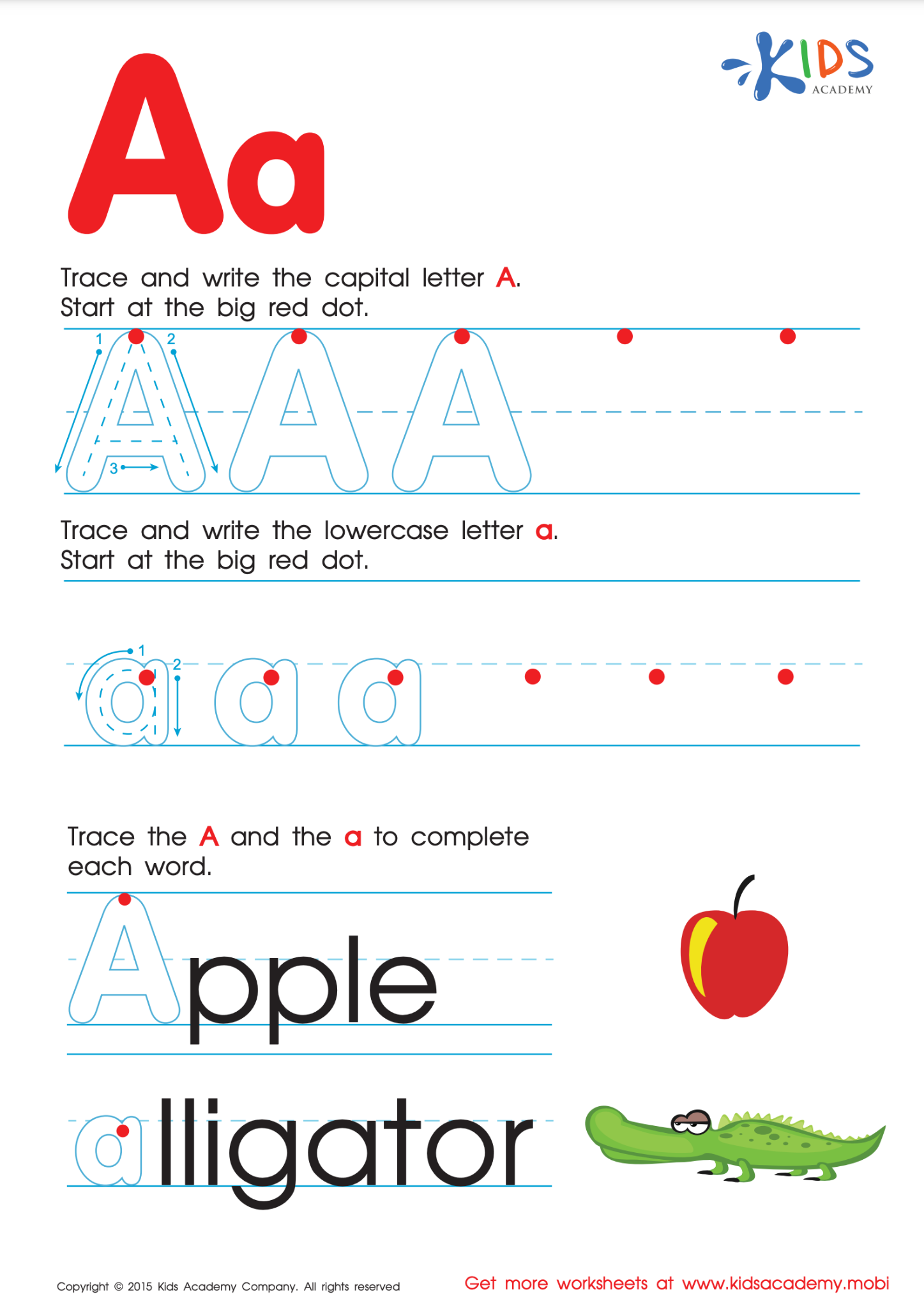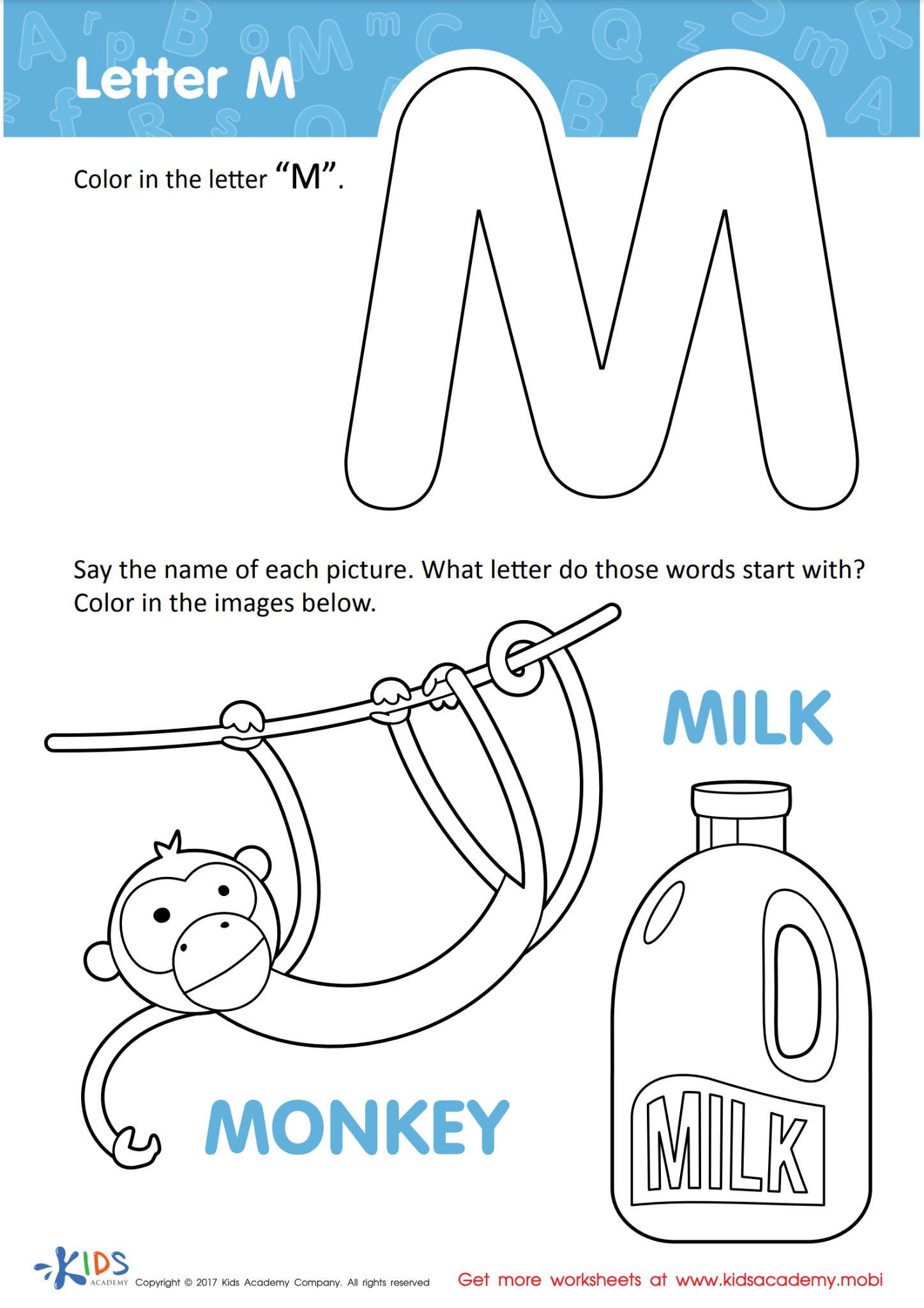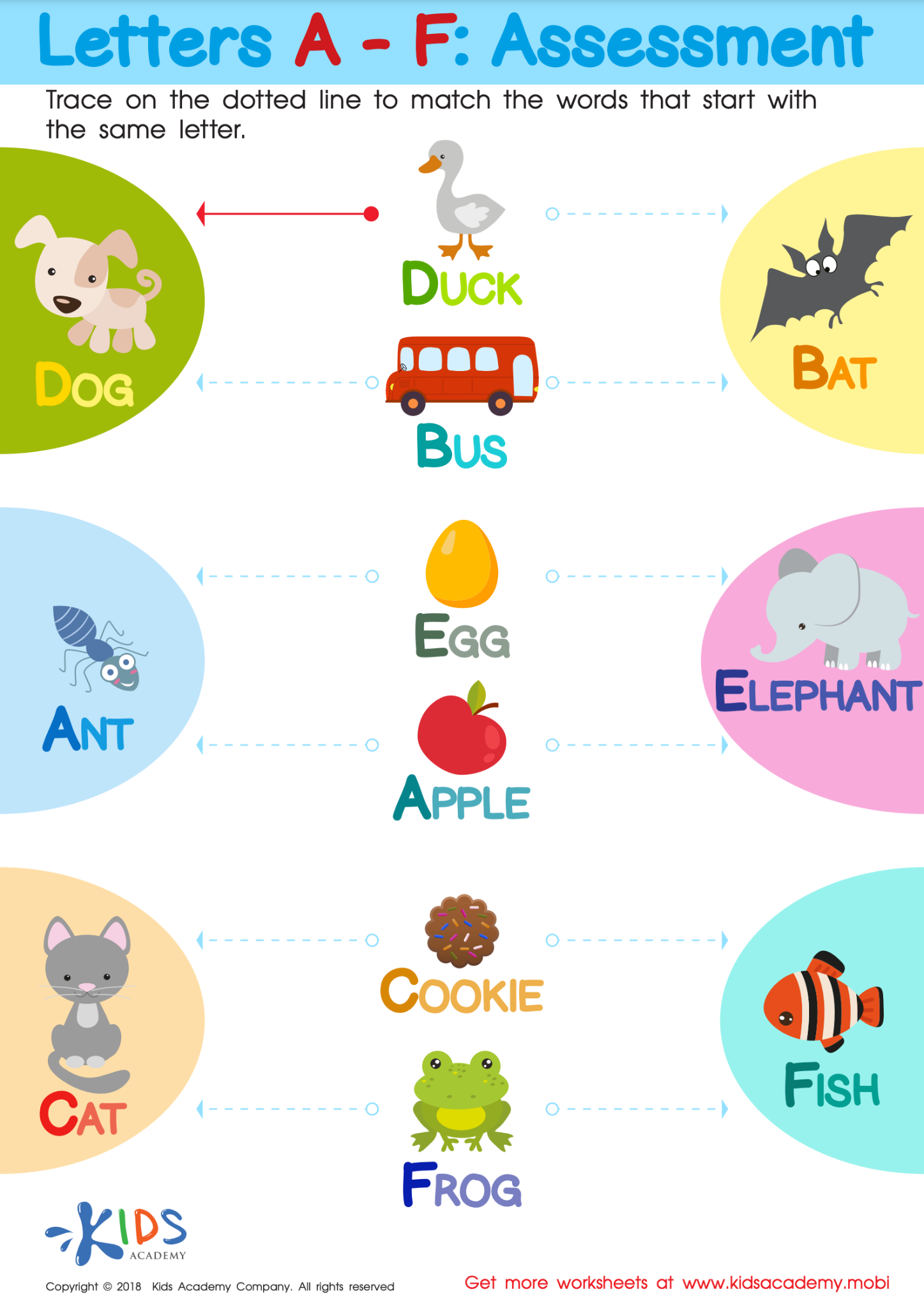-
English
-
English Pre-K
-
Unit 1: Early Literacy Skills
-
ABCs
- Pre-writing Activities
- Letter A
- Letter B
- Letter C
- Letter D
- Letter E
- Letter F
- Letter G
- Letter H
- Letter I
- Letter J
- Letter K
- Letter L
- Letter M
- Letter N
- Letter O
- Letter P
- Letter Q
- Letter R
- Letter S
- Letter T
- Letter U
- Letter V
- Letter W
- Letter X
- Letter Y
- Letter Z
-
Phonological Awareness
- Rhyming Words
- Letter Sounds B, C, D, and F
- Letter Sounds G, H, J, and K
- Letter Sounds L, M, N, and P
- Letter Sounds Q, R, S, and T
- Letter Sounds V, W, X, Y, and Z
- Letter Sounds A, E, and I
- Letter Sounds O and U
- Beginning Sounds
- Matching Letters to Sounds
-
ABCs
-
Unit 2: Vocabulary
-
Common Words
- Sorting Words into Categories
- Color Words
- Verbs and Adjectives
-
Sight Words
- Sight Words 'I' and 'Can'
- Sight Words 'You' and 'Like'
-
Common Words
-
Unit 3: Print Awareness
-
Parts of a Book
- Working with a Book
- Spaces Between Words
- Text and Illustrations
-
Picture Books and Poems
- Picture Book Text Features
- Poem Text Features
- Signs and Labels in the Community
-
Parts of a Book
-
Unit 4: Reading Literature
- Questions About Stories
- Discussing Stories
-
Unit 5: Reading Informational Texts
- Retelling Details in a Text
- Questions About a Text
- Connections Between Events
- Text Features
- Describing Illustrations
-
Unit 1: Early Literacy Skills
-
English Pre-K
-
Math
-
Math for Pre-Kindergarten
-
Logic and Geometry
-
Matching and Sorting
- Same and Different
- Which One Is a Little Different?
- Objects That Go Together
- Sorting by Color and Size
- Sorting The Same Group in Different Ways
- Patterns
-
Shapes
- Shapes in Our Environment
- Naming Shapes Regardless of Size
- Making Shapes in Preschool
- Comparing Shapes
- Relative Positions
- Sorting Shapes
-
Matching and Sorting
-
Early Number Sense
-
Numbers 1–5
- Counting to 3
- Counting to 5
- Arranging Objects up to 3 Objects
- Arranging up to 5 Objects
- Writing Numbers 1–5
-
Numbers 1–5
-
Numbers up to 10
- Counting to 10
- Arranging up to 10 Objects
- Number 0
- Writing Numbers 6–10
- Breaking Down Numbers 6-10
-
Logic and Geometry
-
Math for Pre-Kindergarten
ABCs
Although we take it for granted, learning the ABCs is an integral part of early literacy development. According to a paper published in the National Library of Medicine, ‘Children’s knowledge of letter names and sounds is the best predictor of their later reading and spelling abilities’. When the child learns letter names, it becomes possible to relate them to their sounds, especially that a lot of the letters’ names actually resemble the letter sounds. For example, it will be easier for the child to know that the letter ‘B’ makes the sound /b/ if they know its name. The alphabet is also the most important tool in improving spelling and pronunciation, so having a good command of it can provide a great advantage.
In this chapter, we will cover learning the ABCs as an early literacy skill at the Pre-K stage and what it entails. In addition, we will be providing you with several fun activities to help your child master the alphabet. Before delving into learning letter names, shapes, and sounds, we need to train your child’s hand and make sure that it will be able to produce lines that make up letters. Therefore, the first lesson in this chapter will be on pre-writing activities. Then, we will move on to learning each letter individually, starting with the letters A, B, C and D. Each lesson will tackle one of these letters, specifically its shape, sound and examples of its usage.
Alphabet Worksheets
There are countless ways in which you can help your preschooler learn the alphabet smoothly and without any pressure. Here is a list of a few activities from our website that we think are effective in making the process fun and fuss free:
- Tracing Letters: print out a tracing worksheet from the Kids Academy website of the letter you are studying

- Alphabet Coloring Pages: Let your child color in the letters and images on these Kids Academy worksheets

- Letter Matching: Let your kid look at each word in this worksheet and identify which of the two words starts with the same letter as the word in the middle.

Alphabet Crafts and Games
Some other activities you can implement with your child at home to aid their learning journey are:
- Alphabet Sensory Bottle: place pieces of paper with letters written on them or alphabet beads in a plastic bottle filled with rice, let your child shake the bottle to find the letters and cross them off a list on a separate piece of paper.
- Alphabet Matching: Write each letter on two cardboard cards and put them face down. Let your child try to find the two matching cards.
- ABC Soup: Let your child play around with ABC soup and help them identify the different letters they find
- Invisible ABCs: Write some letters with a white crayon on a piece of white paper, then let your child paint with watercolors over the paper and watch the letters appear.
Learning the ABCs is a huge milestone at your child’s learning stage. It can help them reach their future milestones faster and aid their reading and writing skills significantly. If you would like to read other articles about our Pre-K ELA curriculum, check out this interactive catalogue.